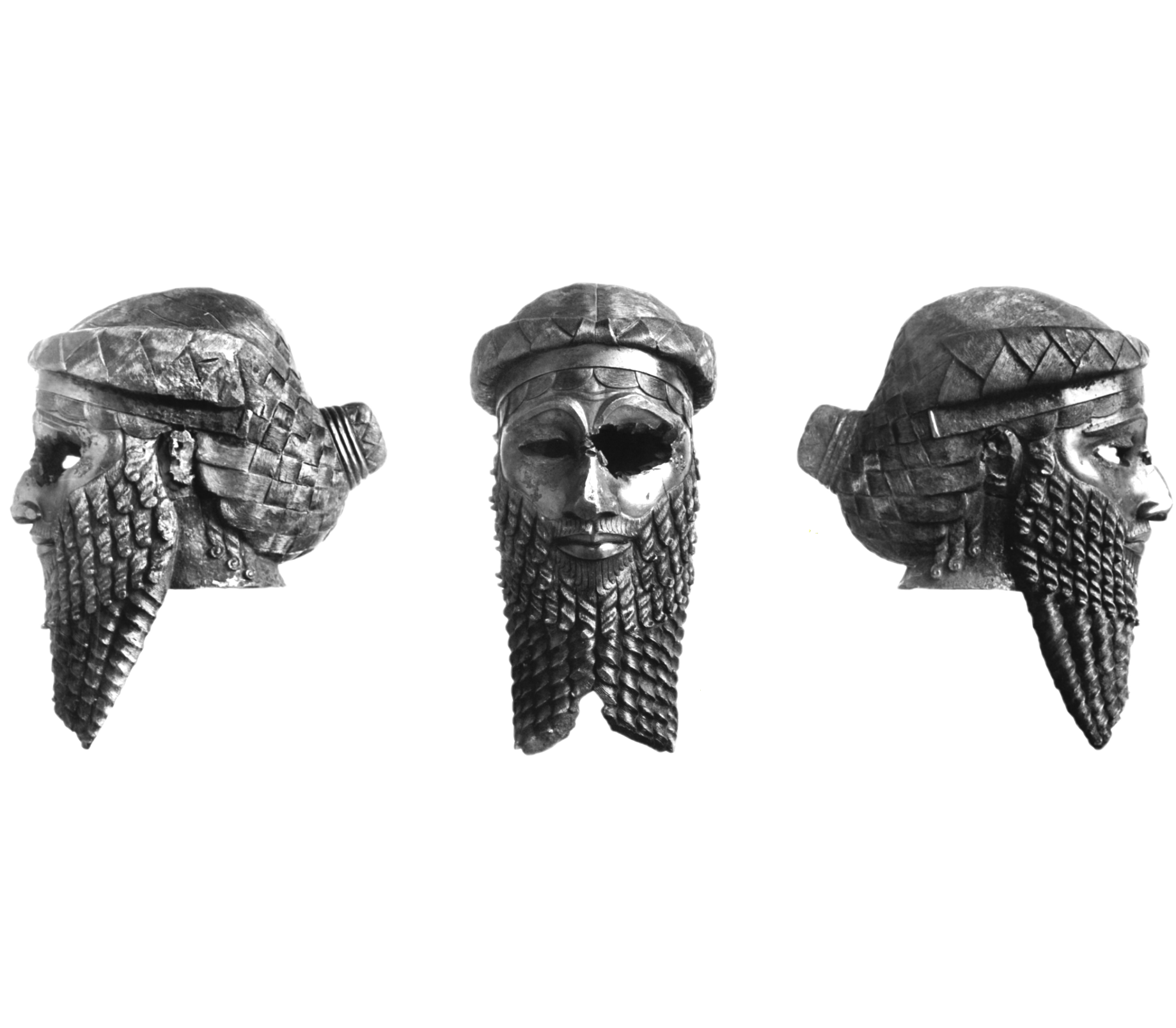AKKADIAN PERIOD
(2350-2159 B.C.)
Sargon of Akkad (2340-2284 B.C. )𒈗𒁺
came to power at Kish and rallied around him an strong army of Semitic speakers of Akkadian. To consolidate his hegemony over Sumer, Sargon sacked the neighbouring cities and launched a military campaign against Lugal-zaggesi, King of Uruk, whom after fierce battles he utterly defeated. By about2340 B.C. he had established political control over the whole unified land of the “twin rivers”, north and south. He sent military expedition against neighbouring states occuping Anatolia, Syria, Palestine and the Mediteranean shores, and launched successful campaigns in the Arab Gulf area and Elam. The geographical horizon of the Akkadian Empire under Sargon encompassed the whole area of the Middle East with the city of Akkad as seat of government. The site of Akkad itself has not been identified so far;it is probably in the central part of the country near Babylon and Sippar, in the neighbourhood of the modern town of Mahmudiyah. Ancient tales and legends have givenus descriptions of Sargon’s birth and- childhood and give us the Akkadian form of his a throne name, Sharrum-kin “The king is righteous (or legitimate)”. His mother was a temple woman who conceived him and bore him in secret. She put him in a basket and cast him into the Euphrates river which carried him until he was rescued by agardener.The gardener reared him and when he became grown-up the Goddess Ishtar granted him her love. He gained a position in the service of Ur-Zababa, King of Kish, and then managed to overthrow his master.
The glorious reign of Sargon lasted for fifty-six years, during which the population benefited from prosperity and national security, and the Sumero-Akkadian culture bymeans of cuneiform writing spread not only through Iraq but into all neighbouring countries. Inscribed tablets found in remote places in Anatolia and Elam testify to the cultural influence brought to bear on those countries by the Akkadian empire. Art also continued to develop under Sargon. In the Iraq Museum there is exhibited a magnificent almost life-sized bronze head which is sometimes identified with Sargon himself.This beautifully worked bronze with its strong lines and exquisite detail is considered one of the most precious exhibits of the Museum (Hall V. Case 4). Another fine piece now the Akkadian exhibited in the Museum is a stele fragment depicting in bas-relief men army with prisoners of war (Hall V, Case I). After Sargon’s death (ca. 2284 B.C.) his sons and successors Rimush and Manishtusu had to exert great efforts on all sides to preserve the structure of this far-flung empire until Naram-Sin came to power.
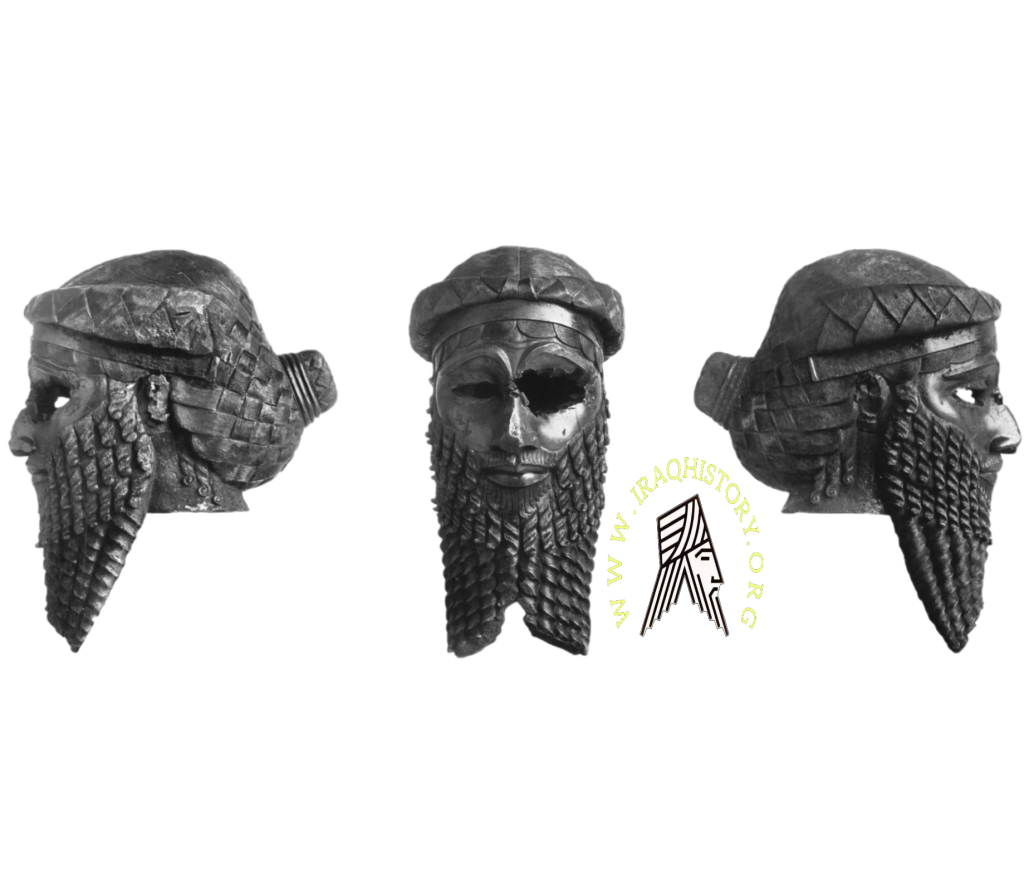
Mask of Sargon On stylistic grounds, this is now thought to represent Sargon’s grandson Naram-Sin, rather than Sargon himself
Enheduanna : 𒂗𒃶𒌌𒀭𒈾 (high) priestess of the moon god Nanna (Sīn) in the Sumerian city-state of Ur in the reign of her father, Sargon of Akkad ( 2334 – c. 2279 BC). She was likely appointed by her father as the leader of the religious group at Ur to cement ties between the Akkadian religion of her father and the native Sumerian religion.
Enheduanna has been celebrated as the earliest known named author in world history, as a number of works in Sumerian literature, such as the Exaltation of Inanna feature her as the first-person narrator, and other works, such as the Sumerian Temple Hymns may identify her as their author
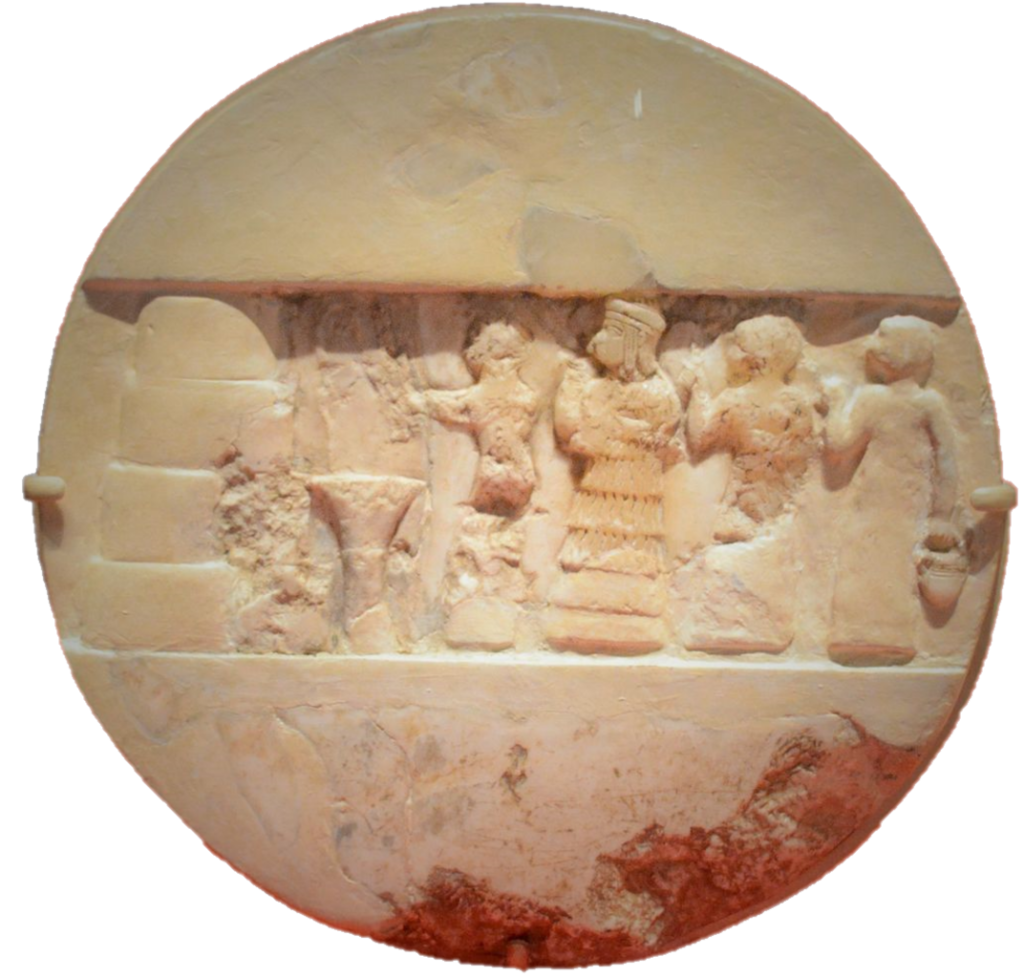
The Enheduanna Tablet is considered by literary and historical scholars to be the oldest woman writer and poet
Rimush 𒌷𒈬𒍑 c. 2279–2270 BC
was the second king of the Akkadian Empire. He was the son of Sargon of Akkad and Queen Tashlultum. He was succeeded by his brother Manishtushu, and was an uncle of Naram-Sin of Akkad. Naram-Sin posthumously deified Sargon and Manishtushi but not his uncle.His sister was Enheduana, considered the earliest known named author in world history.Little is known about his brother Shu-Enlil. There was a city, Dur-Rimuš (Fortress of Rimush), located near Tell Ishchali and Khafajah. It was known to be a cult center of the storm godAdad.
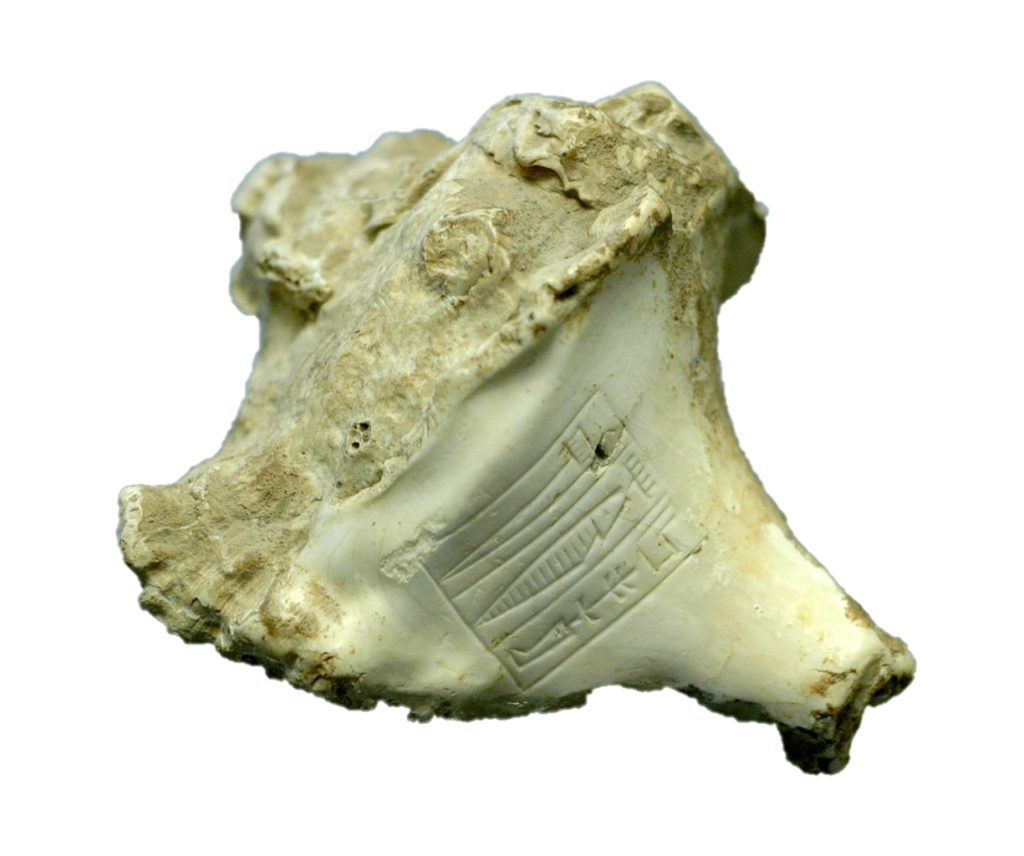
Cuneiform inscriptions documenting the name Rimush 𒌷𒈬𒍑 are preserved the Louvre Museum
Manishtushu 𒈠𒀭𒅖𒌅𒋢,c. 2270-2255 BC was the third (or possibly second) king of the Akkadian Empire, reigning 15 years from c. 2270 BC until his death in c. 2255 BC .He was the son of Sargon the Great, the founder of the Akkadian Empire, and he was succeeded by his son, Naram-Sin who also deified him posthumously
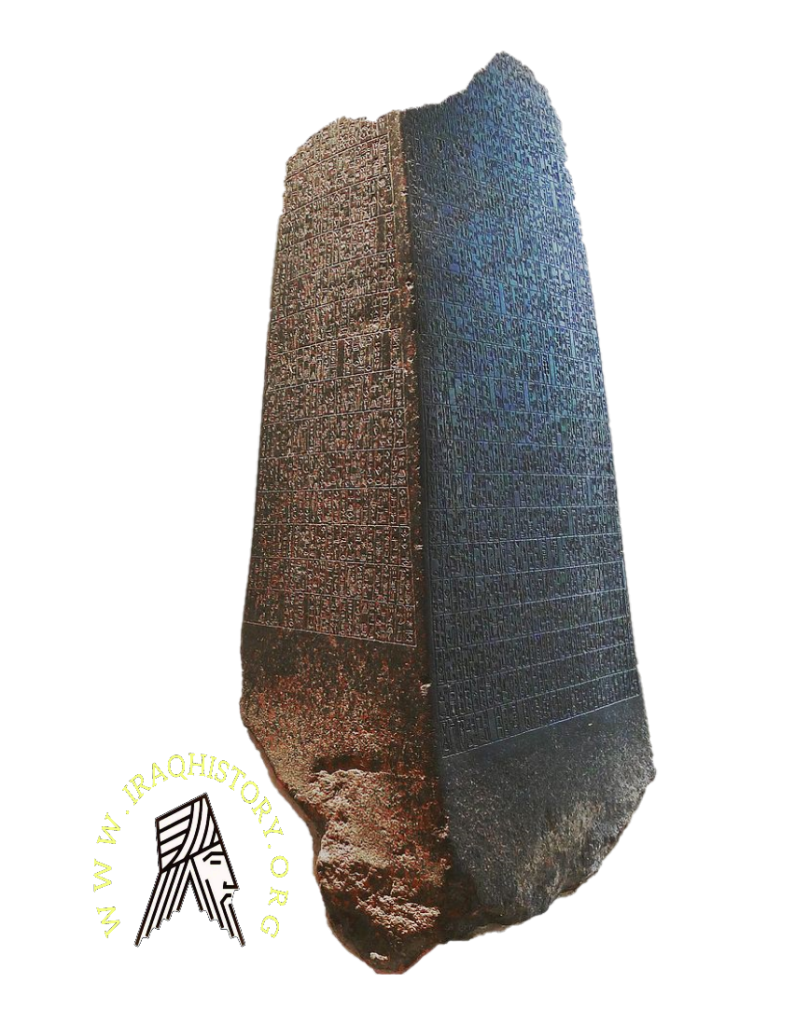
The Manistusu obelisk is an inscribed four-sided obelisk made of black diorite. It was found during Jacques de Morgan’s excavations at Susa, where it had been brought by the Elamite ruler Shutruk-Nahunte, together with many other iconic Mesopotamian objects. Its inscription deals with the acquisition of eight plots of land by Manistusu, the third (or after the Ur III version of the Sumerian King List second) king of the Sargonic dynasty. The fields are acquired from different sellers and amount to a total of approx. 9,700 iku (= approx. 3,400 ha) of land. All plots of land can be located within the land of Akkad. (Klaus Wagensonner, University of Oxford)
Lineart: Edition(s): Gelb, I.J., P. Steinkeller and R.M. Whiting, Jr. 1989. 1991. Earliest Land Tenure Systems in the Near East: Ancient Kudurrus. Oriental Institute Publications 104. Chicago: The Oriental Institute, 116ff, no. 40
Naram Sin (2260-2223 B.C.) 𒀭𒈾𒊏𒄠𒀭𒂗𒍪
managed to re-conquor the cities which had revolted against Akkadian rule following the death of his grandfather Sargon. His military operations extended to new territories also such as the mountainous area of the Lullubi in the Zagros Mountains, and parts of Elam. These Akkadian victories are commemorated by a masterpiece of Mesopotamian sculpture the famous stele of Naram-Sin which pictures him climbing a steep mountain and treading upon the corpses of his enemies followed by his soldiers. It was found at the Elamite capital. Susa, over half a century ago by a French expedition and is now the pride of the Louvre Museum. The Akkadian bronze head found at Nineveh could possibly also be identified with Naram-Sin. The reign of Naram-Sin was also characterized by building projects and social developments: following the example of his grandfather Sargon, he controlled legal and economic conditions throughout his domains, and cuneiform script was used to write the Akkadian language, spreading through Mesopotamia and some peripheral states. The reign of Naram-Sin lasted 37 years and he was succeeded by his son Shar-kali-sharri.

The Victory Stele of Naram-Sin is a stele that dates to approximately 2254–2218 BC, in the time of the Akkadian Empire, and is now at the Louvre in Paris. The relief measures 200 cm. in height and was carved in pinkish sandstone with cuneiform writings in Akkadian and Elamite. It depicts the King Naram-Sin of Akkad leading the Akkadian army to victory over the Lullubi, a mountain people from the Zagros Mountains.
Shar-kali-sharri (2223-2198 B.C.) 𒀭𒊬𒂵𒉌 𒈗𒌷
spared no effort towards preserving the unity of the formidable empire of Akkad. But as the pressures of revolt in remote territories increased, his efforts were of no avail and large tracts regained their independence. During and after his reign hordes of Guti highlanders descended into Mesopotamia, while the Sumerians took advantage of any opportunity to declare themselves independent in their own cities.
After the death of Shar-kall-sharri six kings reigned in quick succession (2198-2159B.C.). Their reigns were characterized with increasing weakness and most of the territories under Akkadian suzerainty declared succession and several of the major Sumerian cities such as Ur and Uruk became independent. A state of anarchy dominated the situation to such an extent that even the Sumerian King List could only declare “Who was king among them and who was not?” In the end the coup de grace was given by the Guti highlanders who raided Mesopotamia, destroying cities and spreading terror over all Sumer and Akkad. This marked the final collapse of the Akkadian empire (2159 B.C.)which had exercised authority for about two centuries
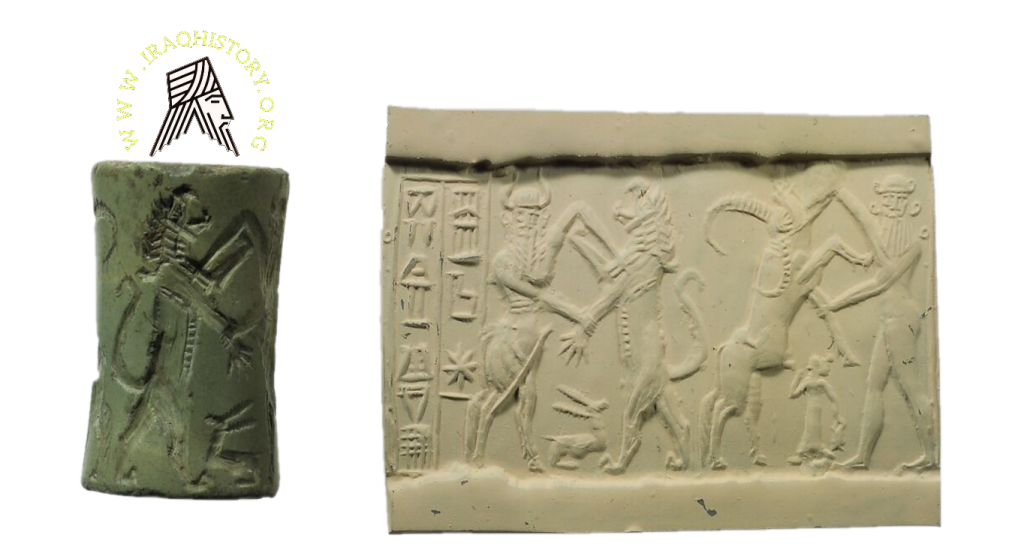
Cylinder seal and modern impression: bull-man combatting lion; nude hero combatting water buffalo; inscription Akkadian ca. 2250–2150 BCE
Sources :
Faraj Basmachi + Harvard University + British Museum + Iraqi Museum + Louvre Museum + University of Chicago


